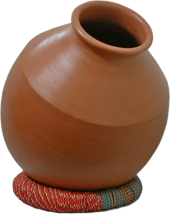
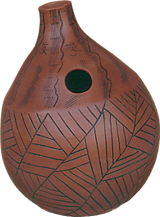
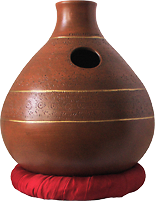
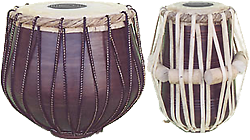
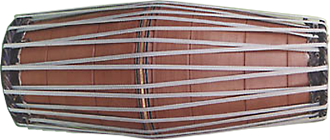
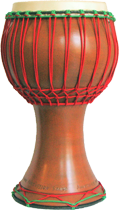
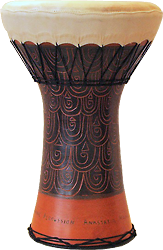
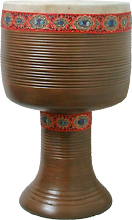
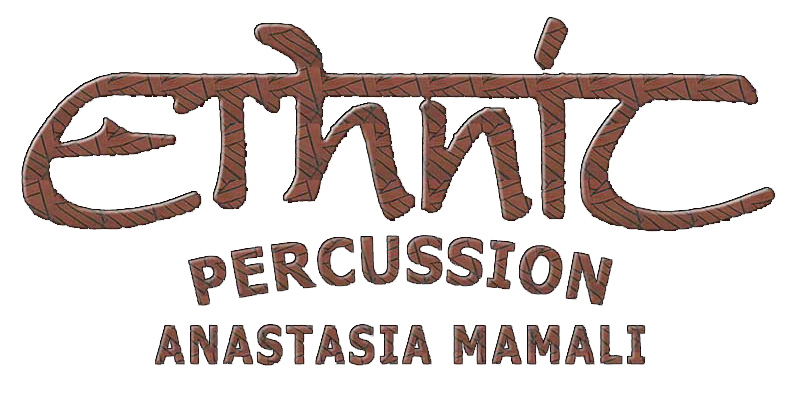
The ghatam, one of the most ancient percussion instruments of South India, is a mud pot with open and narrow mouth. Known as Noot in Kashmir and Mudki in Rajasthan, it was used more or less in folk dance music. But in Southern India, it has become an highly sophisticated instrument, played at concert level.
The Ethnic Percussion ghatam includes in construction all possible knowledge to transfer a clay form -like indian ghatam- to a speaker, according to standards of his tradition. Also Ethnic Percussion ghatam has been used in music performances at Chennai from the musician Vikku Vinayakram.
The Ethnic Percussion Ghatam-Udu is a unique idiophone instrument made in the workshop owned by Anastasia Mamali. This instrument offers to the musician the posibility of using the ghatam strokes in fingers while keeping the worm base sound of an udu drum.
The Ethnic Percussion udu drum is based on the traditional African form of musical instruments. Greek clay with admixtures ensures the most in durability of the instrument and the clarity in sound. The clay mixture and the well designed form, bring out easily the deep and warm base sound as well as a range of high tonalities.
The tabla constitutes a vital part of Indian music, especially in the North India, and no concert, either vocal or instrumental, can take place without a pair of tabla. It consists of two drums, the bayan played with the left hand and the dayan played with the right hand. The clay tabla, mosty the bayan, has been used, mainly because it produces an excellent sound. The Ethnic Percussion Tabla is crafted with exceptionally hight quality standards.
Mridangam is the most popular classical instrument in South India. Literally it means: The clay drum. The Ethnic Percussion mridangam is based on the acoustic prototypes of this tradition.It has also been played in Chennai by the famous N.Ramakrishnan.
The greek doumbek, which is played in certain areas of Greece, is associated with traditional folk music, accompanying singers and wind instruments. The Ethnic Percussion Greek darbuk is a result of survey and reviving of these instrumets that were in use till late 19th to early 20th century. Increasing demand for this revived instruments among professional musicians is only an indication of the dynamic results in oriental sounds under forceful performance or studio work.
The Ethnic Percussion arabic darbuk (darbuka), size of leather surface from 7 to 11 inch, is tied in the traditional way or with metalic rings.The very first big one –doholla– was made for musician, Hossam Ramzy, used in his tour in the USA. At the Ethnic Percussion workshop a musician can contribute by taking part in the final design of the instrument, and adapt the different details in construction to his/her taste.
The zarb(or tombak) is a unique goblet drum, originally made for classical Iranian music, becomes a challenge to the new percussionists demanding skilfull techniques and sensitive playing.
The Ethnic Percussion zarb follows the constructive details as recommended by today’s famous Iranian musicians, the Trio Chemirani.
